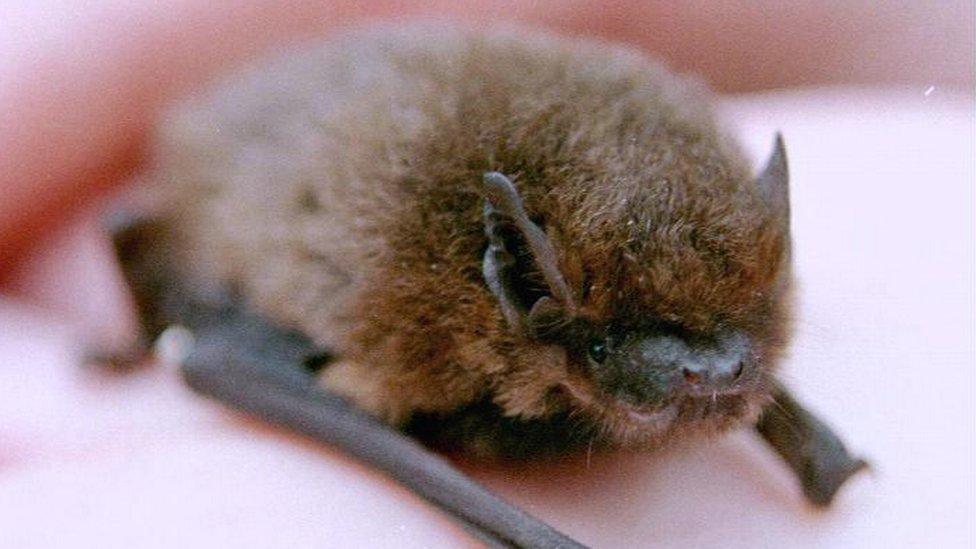Largest bat colony found at Seaton Delaval Hall 'party house'
- Published
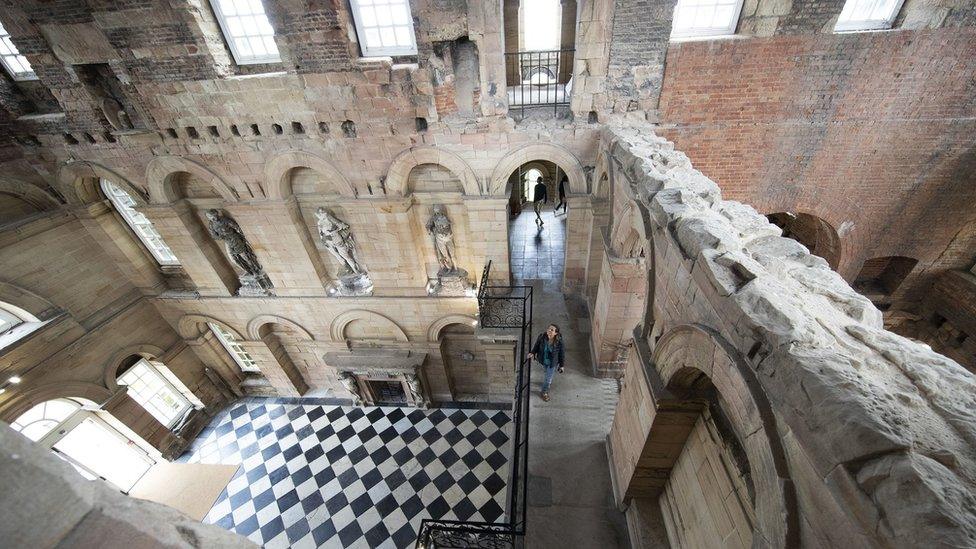
The bats were discovered in crevices and arches of the central hall
A fire-scarred Baroque "party house" is home to what is believed to be the largest winter roost of common pipistrelle bats in the UK.
Seaton Delaval Hall in Northumberland was built in 1728 for the Delaval family, who hosted lavish balls.
Partially destroyed by fire in 1822, it is now owned by the National Trust.
During conservation work, 61 of the mammals were found in stone crevices and arches, and even more are thought to be hidden elsewhere.
The bats would have arrived after the 18th Century hall was ravaged by fire and left exposed to the elements for more than 40 years.
Although a new roof was later installed, the bats would still have gained access through crevices in the stonework.
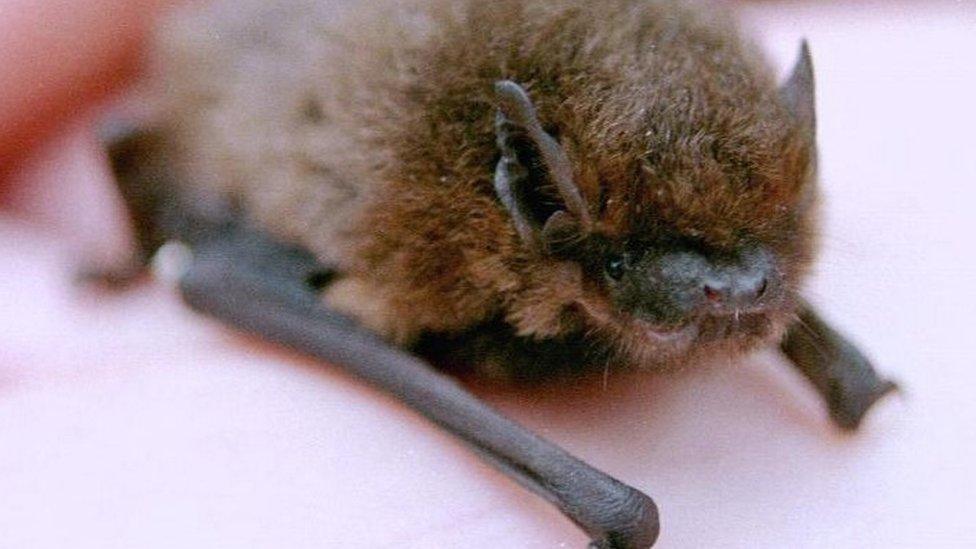
Many more common pipistrelles are thought to be hidden in the hall
David Bullock, head of conservation at the National Trust, said most bats like cool, moist and dark hibernation locations but the pipistrelles residing in the central hall were in light and dry crevices.
"I've never encountered hibernating pipistrelles in such numbers before," he added.
"The cavities in the stones in Seaton Delaval Hall's central hall provide one of the few known hibernation sites of what could be hundreds of them."

You may also like:

The original owners of the hall, who were known as the "Gay Delavals", were known for their extravagant parties and were among the most outrageous of all Georgian partygoers.
They were also fond of practical jokes and guests would sometimes awake to find the room had been turned upside down with furniture fixed to the ceiling, or a mechanical bed might give way to drop the occupant into a bath of freezing water.
The National Trust said it would use some National Lottery funding for further surveying work to learn more about how the bats use the hall so it can protect them during further repair work.
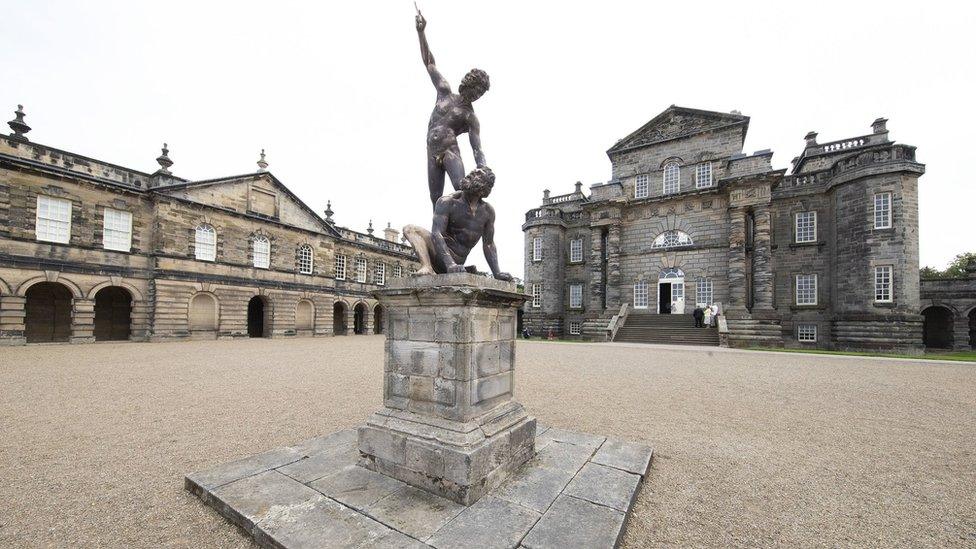
Seaton Delaval Hall was designed by Sir John Vanbrugh, architect of Blenheim Palace
- Published20 August 2018
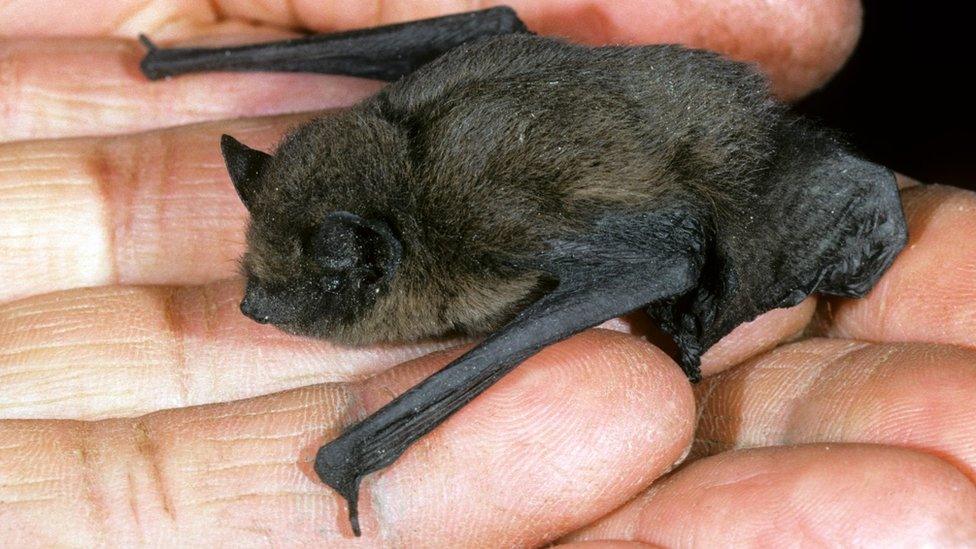
- Published5 April 2018

- Published25 January 2018
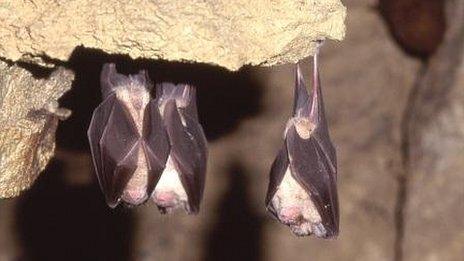
- Published9 August 2016
